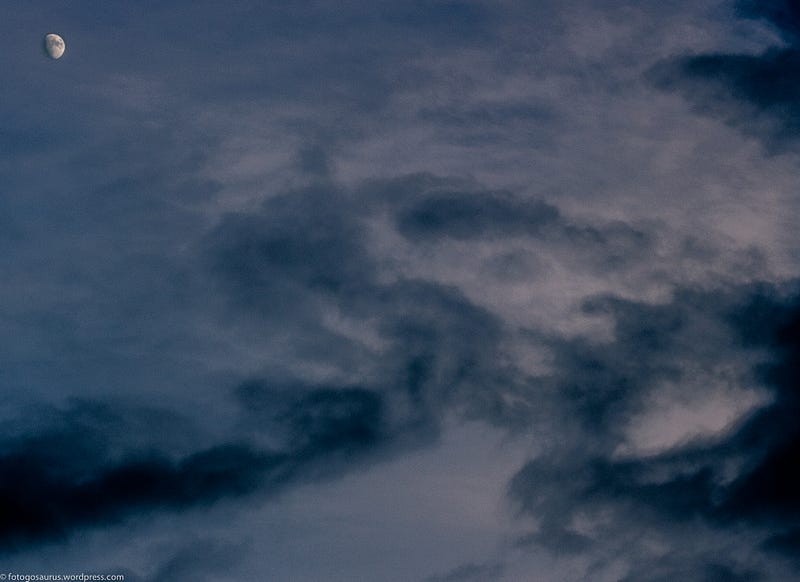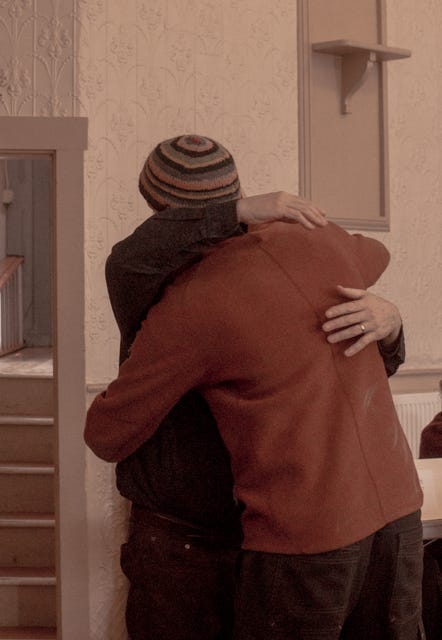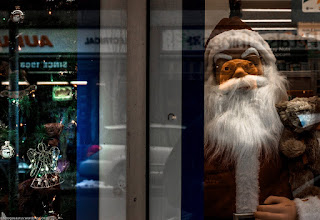Review of Joker
Joker Isn’t Wild
“Violence! Violence! It’s the only thing that will make you see sense”
Mott the Hoople, Violence
“Better to be king for a night than schmuck for a lifetime”
Rupert Pupkin, The King of Comedy
“I have several children who I’m turning into killers. Wait till they grow up”
David Berkowitz, The Serial Murderer know as ‘Son of Sam’
The advertising campaign for Todd Phillips’ Joker suggests a downscale revamp of the demonic Hannibal Lector in Demme’s iconic The Silence of the Lambs. In reality this monster starts as a lamb, the wolf’s clothing follows. The film, despite the pr blitz promoting deranged violence, is a portrait of mental illness run amok via cruelty and negligence. The gory, disturbing moments are merely garnish. The main entree is a bevy of serious social commentary touching on income inequality, gun control, government attitudes towards the underclass, the treatment of the indigent… Joker has more in common with political science than comic book fiction. And yet this seemingly “serious” movie made nearly $100 million in domestic box office receipts on its opening weekend. The reason can be summed up in two words, Joaquin Phoenix. The mesmerizing actor, this generation’s Jack Nicholson, has honed the portrayal of off-kilter madman to perfection. The track record speaks for itself, from the cruel cult leader Freddie Quell in The Master, to Joe, the loner serial assassin inYou Were Never Really Here. No matter how crazy the part, Phoenix rises. The momma’s boy, rent-a-clown, Arthur Fleck, becomes a disturbing force of chaos, the Joker.
Physicality is the key to Phoenix’s rendering of the future Batman villain. Phillips takes a conventional approach to filming many of the violent sequences. The repose, the quiet, solo moments are this film. One meditates on the breathlessness after the storm. The subway murders are conventional film gruel. The refuge in an abandoned bathroom, with the green florescent lights flickering, is the birthplace of the Joker. The soundtrack is inspired by Samuel Barber’s Adagio for Strings, the touchstone for melancholy classical music. The cello plays a classical riff and our terrifying monster-clown rises above his lowly station. The movements evoke ballet, tango and Martha Graham as the beautiful, malevolent spirts embody the heretofore forgettable Fleck. The romantic string notes vanquish the dinginess of a life spent scribbling gibberish while playing the fool. Each arm twist and careful foot step crushes the darkness of his “real” home, a dirty tenement apartment which he shares with his elderly mother. This is someone who is going places. The goofy clown, being ignored while waving the ‘liquidation sale’ sign, is now on the path to being the silent “rock star” acknowledging the cheering throngs, while standing on the hood of a taxi. This film has a decent script and wonderful set design, but it is the dancer who makes the story move.
Phillips’ cloaks the arc of the journey in a homage to the rough and tumble New York City of the late 70s and early 80s. Kudos to the set designers whose attention to detail brought back the ill-fitting cop uniforms, grubby green diesel buses and graffiti covered subways and side streets. It harkens back to Martin Scorsese’s seminal Taxi Driver, where a psychotic loner also becomes infatuated with gun violence as a vehicle for recognition. The films also share protagonists fantasizing about public acts of violence to bolster their manhood in addition to make-believe girlfriends.
There are numerous moments when Phoenix metaphorically acts out DeNiro’s infamous clarion call for all disaffected, macho, incels: “you talking to me?” Joker is also tied to another DeNiro/ Scorsese collaboration,The King of Comedy. Both films feature misanthropes, who fancy themselves as stand-up comics, whose path leads them to fixate on beloved talk show icons. Ironically Deniro, in this incarnation, plays the host himself, rather than the antagonist. His character, Murray Franklin delivers a marvelous performance that recreates the avuncular New York talk show legend, Joe Franklin. The Joker himself is hiding from a cop who bears a remarkable resemblance to Detective Sipowicz from the 90s cop drama NYPD Blue. Adding to the list of the never-ending Big Apple references is the seminal crime the Joker commits. It is a mirror recreation of an actual 1984 subway shooting that rocked the city and spurred a furious debate about vigilantism vs. heroism. In the Bernie Goetz incident four underclass African Americans were wounded by a white working class businessman. Joker turns the tables and targets three yuppie Wall Streeters. This overt act of terrorism against the rich certainly bears down on actual current events where the income divide is a central issue in Presidential politics. Entertainment juggernauts are even more wary than mainstream corporations in their interest in being seen as taking sides. No doubt Warner Brothers took note of Phillips’ story choices.
The Batman storyline is clear regarding the rich pedigree of its heroes. Batman’s father, Thomas Wayne, figures prominently in Joker. He is a wealthy businessman whose bid to be Gotham City’s mayor is rooted in demonizing the poor and restoring “order”. The Joker and his young son Bruce, the future caped crusader, face-off through the wrought iron gates of his mansion. Thomas, a caricature a self-entitled blue bloods, is detestable.
Unfortunately for the director, lionization of the Joker himself creates problems for the Batman franchise. The larger storyline clearly paints this character as an unredeemable villain. Warner Brothers stepped in and forced an ending to the film which clearly shows justice has been served; or at least evil has been contained. The previous scene, which I believe to be Phillips’ choice of the ending, neatly mirrors the opening sequence and fits into the triumphal arc of the storyline: the Joker has risen and is uncontainable. The “corporate” ending inoculates Warner Brothers from the accusation of glorifying a psychopathic killer. But their efforts didn’t stop there as the spin machine created a false public dialogue regarding the appropriateness of the Joker as a character. One suspects the hand of a publicity machine at work as It Chapter Two, a sequel in a slasher/horror film featuring a bloodthirsty clown, opened the month before with no debate about deranged funny men. The corporate flack diverted the public discourse to the tired hobby-horse of “violence in movies” rather than killing the rich. Obviously it isn’t the gore but the direction of the bloodlust that sparks concern for those in charge. Vengeance against the 1% is an untenable storyline for a Warner Brothers’ product. The concerns about the Batman brand and the companies reputation led to muddled choices, marring the director’s vision that go beyond the contradictory endings. Why is the vengeful mob carrying “resist” signs? Is the Joker a leader of a movement with legitimate grievances? Should he be free to be a rightful avenger? Or does that moniker link him too closely with Batman, the dark knight?
Phillips is clear that his Joker begins as a sympathetic bully betrayed by the system and his family. His initial moments of violence, although unjustified, are linked to betrayal or, in the case of the yuppie subway trio, chivalry morphing into self-defense. The director carefully omits gratuitous gore that would overtly turn the audience against the misguided clown. The fate of the “girlfriend” and her young child is never revealed. Unfortunately the empowerment of violence becomes an end in itself. Phillips never ventures into the realm of seeing the Joker aligning with others. This is a solitary figure without an agenda beyond feeling happy for the next 5 minutes. He feels genuine surprise that anyone thinks he matters. This is the stuff of lotto winners, not arch villains. It would be a leap of faith to believe the character in this film could successfully recruit others in any sort of organized endeavor, a trajectory clearly marked by established Batman history. This is the portrait of a mascot, not a mastermind.
The framework of this character was never built for the weight of serious discourse. The studio’s lackluster artistic support didn’t help. Despite all this, Joker has glimmers of brilliance. Unfortunately even its strongest attribute becomes an Achilles heal. There can be too much of a good thing. Phoenix is masterful, but how many times do we have to hear that unnatural, natural laugh? It is as if the director, overburdened by decisions about his hero, left the perplexing question of humor to hang over the audience. What is funny? How much does our fascination concern the gallows, rather than the gallows humor. It is reported that many audience members attended Lenny Bruce performances to watch an arrest. Do we share in this dubious attribute when we read news stories for sickening carnage? Kudos to Phillips trying to make a larger statement of “what is happening is not funny”. He’s right. In the words of his hero: “She (the Joker’s mother) told me I had a purpose to bring laughter and joy to the world”. This is spoken before the cringeworthy stand-up routines in which he violates the cardinal rule of comedy: he takes out a notebook and READS his jokes. This is the awkward voice of every disenfranchised mass shooter. The general unkindness of the world morphs into personal grievance. The solitary torture of these lonely souls knows no place of solace in our time since caring communities are the only known cure. Instead the offer on hand is a suggestion of compassion. The heartless underfunded bureaucracy of social workers bulldoze through “clients” as prominent members of society repeat bromides about self reliance and taking responsibility. This is a formula that turns meek clowns into mass killing cult leaders. In a world such as this the only cure is the coming of a caped crusader. Time to flash the bat-symbol in the sky. This goes beyond Gotham. The joke is on us.



























